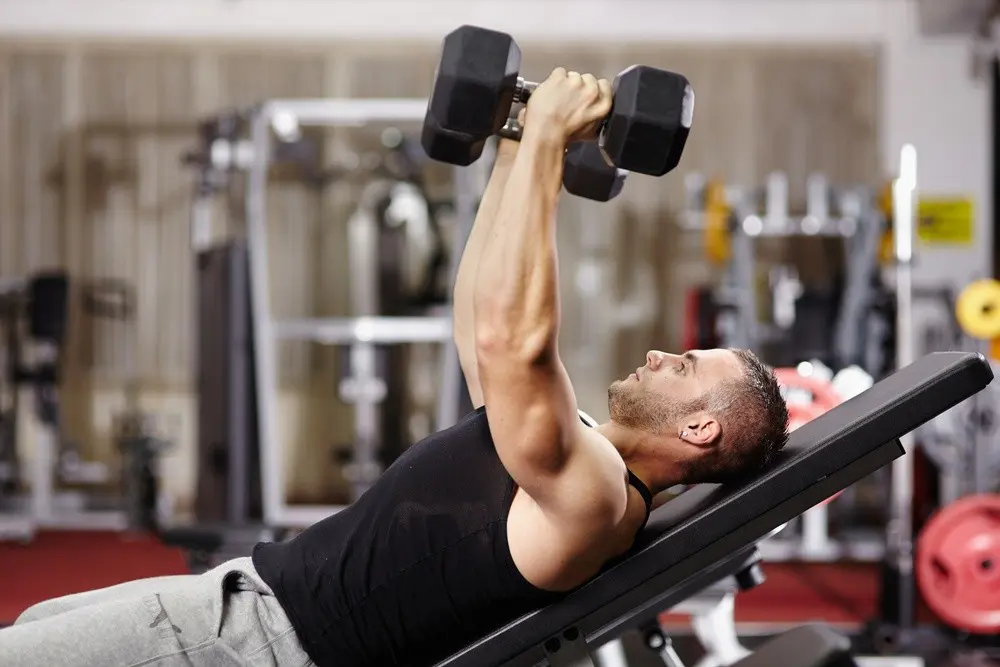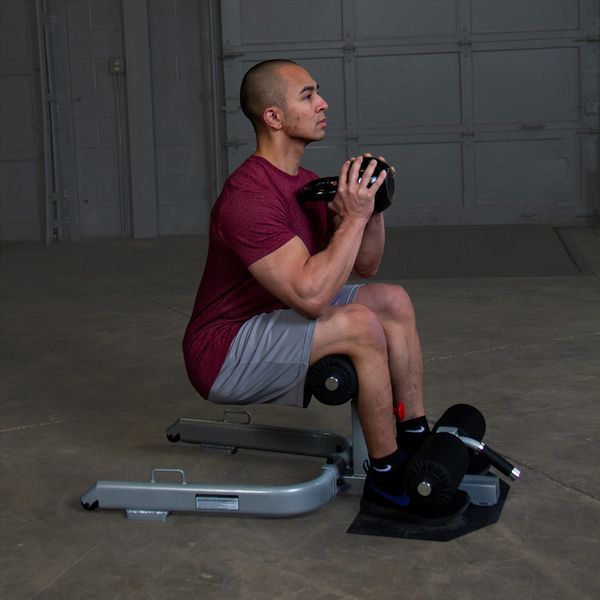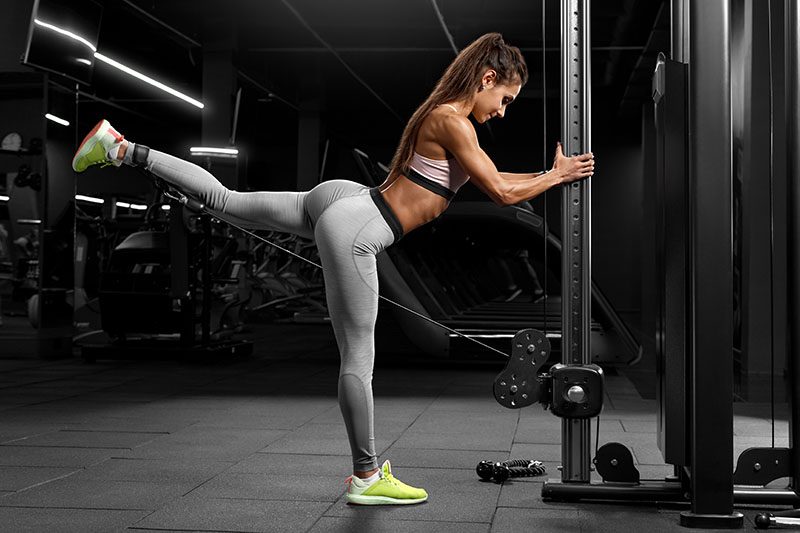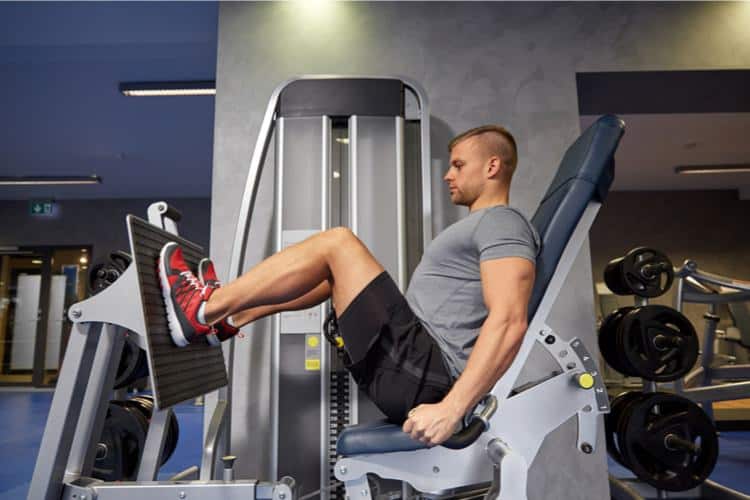
The best online fitness resource you'll ever need. We filter out the BS to ensure you meet your health and fitness goals!

The best online fitness resource you'll ever need. We filter out the BS to ensure you meet your health and fitness goals!

Which is better? The answer is neither.
Neither is inherently better. It really depends on your training objectives, available time, and preferred training methodology.
Choose the Upper-Lower split for those that have had past injuries, life priorities/schedule, and other recovery-related concerns. It’s provides a great balance of intensity, frequency, and most importantly recovery. It’s also more suited for big compound exercises.
Choose the PPL split for those who have a lot of time on their hands. 6 days a week is ideal of PPL and is suited for more isolation work.
The Upper-Lower and Push-Pull/Legs (PPL) split routines are two of the most popular workout structures around. Both the Upper-Lower and PPL simplify lifting program design, making the program easy to follow and analyze.
Whether you’re a beginner, or a seasoned veteran of the iron game, deciding on your training routine is crucial to making strength and size gains. Knowing where to start, what exercises to do, the equipment to do them with, and how often, are four of the foundational questions to getting bigger and stronger.
We’re limiting the scope of this article to comparisons and contrasts between the Upper-Lower vs Push-Pull/Legs splits, using exercise science and sample routines we crafted just for this post. The sample workouts are intended to demonstrate the concept and aren’t necessarily a recommended routine.
We’re intentionally not including sets and reps, nor how to periodize the splits to serve a specific training objective. Those are broader discussions that deserve their own posts.
A split is a workout program structure where the body is divided simply into anatomical or functional segments, with workouts that address them sequentially.
It’s a convenient way to sub-divide the body logically so that the trainee can follow a repeatable program with some goal in mind, in this case, muscular strength or development.
Most resistance workout routines are splits of one sort or another. A whole-body routine would be an exception. It’s the anti-split. There are some really effective whole-body routines out there, but that’s the subject of another article.
Splits emerged from bodybuilding culture and employ traditional weightlifting equipment. Splits differ from functional training, which divides the body according to planes of motion: sagittal, frontal, and transverse. Nor do splits typically use functional training implements.
Knowing what they are, how Upper-Lower vs Push-Pull differ, their pros and cons, and how they align with your training goals will guide your decision for which one to select.
Exercise is physical activity. Training is an exercise with a goal.
The Upper-Lower split divides the workout routine at the waist. It is the simplest of the splits for that reason. Because of its simplicity, the Upper-Lower Split offers tons of flexibility in schedule and exercise selection.
Upper body exercises like flat bench press and triceps pushdowns would be done on one day, with lower-body movements like squats or lunges done on another day.
How many days per week you can lift based on your schedule and recovery time, are the questions you’ve got to answer to make the Upper-Lower work for you.
The freedom offered by the Upper-Lower Split requires that the trainee know a little bit about anatomy, physiology, body fatigue, and recovery. You can easily overtrain, or undertrain, using an upper-lower split.
The routine also offers flexibility in the number of training days per week. In its very simplest form, you’d do two workouts a week: one upper, and one lower.
Most lifters won’t be satisfied with that and it isn’t going to deliver lots of results. Better than nothing for sure, but you won’t win many competitions with two days a week. So, four days makes a little more sense when talking results from a resistance training routine.
A four-day Upper-Lower split might look something like this:
| Weekday | Split |
|---|---|
| Day 1 | Upper |
| Day 2 | Lower |
| Day 3 | Rest |
| Day 4 | Upper |
| Day 5 | Lower |
| Day 6 | Rest |
| Day 7 | Rest |
Lots of flexibility; not much direction. Easy for a beginner to goof up. For the novice, the uber-simple Upper-Lower split doesn’t provide enough detail for each individual workout.
An Upper-Lower can work well for an advanced lifter who knows how to pick and choose between exercises for the upper and lower body. The advanced trainee can slot exercises according to specific exercise attributes, available equipment, or some other variable.
Let’s play around with our sample routine and add specific exercise selection.

A more detailed version of our hypothetical four-day Upper-Lower split might look something like this, with just one exercise selected for each individual muscle group:
| Weekday | Split | Exercises |
|---|---|---|
| Day 1 | Upper | – Dumbbell bench – Cable lat pulldowns – Dumbbell side laterals – EZ Curl bar skull crushers (for tris) – Dumbbell curls – Crunches |
| Day 2 | Lower | – Lunges – Leg extensions – Romanian deadlifts (RDLs) – Hamstring curls – Seated calf raises. |
| Day 3 | Rest | |
| Day 4 | Upper | – Cable flyes – Dumbbell rows – Dumbbell anterior raises – Cable tricep extensions – Barbell curls – Cable rope tucks |
| Day 5 | Lower | – Goblet squats – Leg press – Deadlifts – Standing calf raises |
| Day 6 | Rest | |
| Day 7 | Rest |
OK, let’s say you discover that you have more in the tank at the end of each workout. Here’s where the Upper-Lower split shows off its flexibility.
You can add exercises that complement the others in your routine without adding unnecessary volume for volume’s sake alone.
A great example would be adding deltoid exercises to an upper-body day. You can easily work anterior, medial, and posterior delts on the same day if done wisely.
Here’s what our four-day Upper-Lower split routine would look like with exercises added to each workout.
Note that the second leg day features isolation, single-joint exercises. That supplements the “big” compound exercises in the first lower body day.
| Weekday | Split | Exercises |
| Day 1 | Upper: Chest and Back | Dumbbell bench Underhand dumbbell bench Cable flyes Cable lat pull-ins Cable lat pull-downs High-to-low cable rows |
| Day 2 | Lower: Heavy Leg Day | Squats, Leg press, Deadlifts, Dumbbell RDLs, Seated calf raise. |
| Day 3 | Rest | |
| Day 4 | Upper: Shoulders, Arms, and Core | Seated dumbbell shoulder press, Cable side laterals, Cable front raises, Cable posterior delt pulls, Cable tricep kickbacks, Supine dumbbell triceps extensions, EZ Curl bar curls, Crunches on incline board. |
| Day 5 | Lower: Isolation Leg Day | Leg extensions, Sissy squats, Hamstring curls, Calf raises on Leg press machine. |
| Day 6 | Rest | |
| Day 7 | Rest |

Always keep in mind that training stimulates growth, but that actual growth takes place while you are resting.
— Arnold Schwarzenegger
Ever had the leg wobbles after a big leg session at the gym?
Fortunately, the Upper Lower Split is designed to
Let’s say you’d like to split your upper body day to get more work and account for recovery too. Splitting that upper body day in two is a pretty good strategy if you’re concerned about recovery and have a schedule that allows you to get to the gym another day each week.
Here’s basically the same workout, with the upper body split over two days instead of compacted into one, with another exercise or two thrown in for good measure.
| Weekday | Split | Exercises |
| Day 1 | Upper: Chest | Dumbbell bench, Incline bench, Underhand dumbbell bench, Cable flyes, |
| Day 2 | Lower: Heavy Leg Day | Squats, Leg press, Deadlifts, Dumbbell RDLs, Seated calf raise. |
| Day 3 | Upper: Back and Arms
| Cable lat pull-ins, Cable lat pull-downs, High-to-low cable rows, Dumbbell rows, Cable tricep kickbacks, Supine dumbbell triceps extensions |
| Day 4 | Rest | |
| Day 5 | Upper: Shoulders and Core | Seated dumbbell shoulder press, Cable side laterals, Cable front raises, Cable rear delt pull-downs, EZ Curl bar curls, Crunches on incline board, Cable rope tucks. |
| Day 6 | Lower: Isolation Leg Day | Leg extensions, Sissy squats, Hamstring curls, Calf raises on Leg press machine. |
| Day 7 | Rest |
Pro Tip
We can’t talk Upper-Lower splits and the ability to add more work and days without emphasizing caution for over-training. It’s a thing.
Because there are so few stated boundaries for Upper-Lower, a novice can go to the gym and train to failure every day and try for personal records every workout. Injuries will show up quickly. So will stubborn plateaus that only long lay-offs can bust.
So be smart.
If you’re a novice to the iron game, find someone who’s been around for a while (not one of your skinny-fat novice buddies or a random IG influencer) and get a little guidance to design a program.
Don’t be afraid to approach one of the older guys who looks like they might have been around the gym for a couple of decades. Trainers with reputable certifications like ACE are also a good choice for guidance.
A traditional Upper-Lower Split says that the exercises are compound, multiple joint movements, and heavy.
My old powerlifting routine was essentially an Upper-Lower split. Here’s that 1982 routine, expressed as an Upper-Lower split:
| Weekday | Split | Exercises |
| Monday | Lower | Deadlifts, Partial deadlifts (floor to just beyond sticking point), High pulls, Cable lat pulldowns, or Dumbbell rows. |
| Tuesday | Upper | Bench (competition grip), Wide grip bench, Narrow grip bench, Cable triceps pushdowns, Hammer curls. |
| Wednesday | Rest | |
| Thursday | Lower | Squats (competition form), High bar-Heel elevated squats (in offseason), Rack deadlifts for weight, Vertical (overhead) leg press. |
| Friday | Upper-Lower | Super-light squats (bar only or light Good Mornings, Super-light bench or Dumbbell press, Dumbbell side laterals or front raises, hammer curls. |
| Saturday | Rest | |
| Sunday | Rest |
But who says that an Upper-Lower has to be big, compound moves? You can apply the same Upper-Lower methodology using isolation body part exercises.
As an experiment, I got creative and deconstructed my old 1982 powerlifting competition routine above, replacing the “big” lifts with isolation body part exercises.
Take a look:
| Weekday | Split | Exercises |
| Monday | Lower | Dumbbell RDLs, Reverse Lunges, Cable clamshells, Multi-Hip pull-down, Hamstring curls. |
| Tuesday | Upper | Single-arm cable presses, Underhanded dumbbell bench, Cable lat pull-ins, Low-to-high T3-T4 scapula shrugs, Crunches on an incline board. |
| Wednesday | Rest | |
| Thursday | Lower | Sissy squats, Leg extensions, Dumbbell RDLs, Hamstring curls, Cable glute kickbacks. |
| Friday | Upper-Lower | Cable side laterals, Cable rear delt pulldowns, Dumbbell or Cable Shrugs, Dumbbell triceps skull crushers, Dumbbell hammer curls, Calf raises on leg press machine. |
| Saturday | Rest | |
| Sunday | Rest |
Don’t be limited by bro-science that dictates upper-lower splits be composed of only big, heavy compound movements. You may find that single-joint, isolation exercises enhance your recovery speed, individual muscle growth, and allow you to train more often.

Is the Upper-Lower split for you? Maybe.
If one or more of the following applies to you, try the Upper-Lower split.
The Push-Pull/Leg split divides the workout routine at the waist and separates the upper body according to the job being performed: pushing or pulling. Legs are in a day all by themselves.
Pushing exercises like bench press are done on one day, followed by pulling exercises like seated rows. Then, of course, leg day.
Push-Pull/Leg by design adds workout days. It’s traditionally adopted by lifters who still want a very basic sub-division to their weekly gym work, but still loosely defined to allow for variability in exercise selection for each workout.
The Push-Pull/Leg split. The PPL split promises more workout days per week, at least in concept. Since “Upper” divides in two: Push and Pull. (Why can’t leg exercises be included in either Push or Pull days depending on if they are pushing or pulling leg motions? More on that in a bit.)
With pushing and pulling separated, you can get the fifth day, no sweat. A simple five-day Push-Pull split might look something like this:
| Weekday | Split | Exercises |
| Day 1 | Push | Chest, Shoulders, Triceps |
| Day 2 | Pull | Back, Biceps, Core |
| Day 3 | Rest | |
| Day 4 | Leg | Traditional leg day (heavy squats, etc.) |
| Day 5 | Push | Chest, Shoulders, Triceps |
| Day 6 | Pull | Back, Biceps, Core |
| Day 7 | Rest |
Not a lot of direction in this example about which exercises to do, or how many sets and reps…but you get the picture. An experienced lifter can actually use a loose framework like this as-is, and plug in the exercise-set-rep structure that best suits their goals.

You can tweak the five-day PPL to include auxiliary leg work in a “pull” day. Here’s an example with back exercises that use legs added to the second pull workout:
| Weekday | Split | Exercises |
| Day 1 | Push | Chest, Shoulders, Triceps |
| Day 2 | Pull | Back, Biceps, Core |
| Day 3 | Rest | |
| Day 4 | Leg | Traditional leg day (heavy squats, etc.) |
| Day 5 | Push | Chest, Shoulders, Triceps |
| Day 6 | Pull | Back (include moderate weight deadlifts or RDLs), Biceps, Core |
| Day 7 | Rest |
Dropping a few back moves that require legs is an elegant way to get some lower body and posterior chain work more on more than a single day per week. Don’t get greedy and turn Pull Day #2 into personal record deadlift day though. It’s there to give your legs a little extra juice.
You can also adopt a Push-Pull/Leg for fewer workouts per week.
PPL also works well for a three-day routine. Assume here that each day is strenuous since you have those alternating rest days. Here’s what a three-day PPL might look like:
| Weekday | Split | Exercises |
| Day 1 | Push | Chest, Shoulders, Triceps |
| Day 2 | Rest | |
| Day 3 | Pull | Back, Biceps, Core |
| Day 4 | Rest | |
| Day 5 | Legs | Traditional leg day (heavy squats, etc.) |
| Day 6 | Rest | |
| Day 7 | Rest |
Some of the most iconic iron gamers in history used a three-day-per-week program. Fewer days per week assume harder workouts and therefore keen attention to recovery.
We acknowledge that most lifters who pick Push-Pull/Legs want more days in the gym. PPL makes more frequent workouts easy to program. Here’s a hypothetical six-day PPL routine:
| Weekday | Split | Exercises |
| Monday | Push | Dumbbell bench, Incline bench, Underhand dumbbell bench, Cable triceps extensions. |
| Tuesday | Pull | Cable lat pull-ins, Cable lat pull-downs, High-to-low cable rows, Dumbbell curls, Dumbbell curls, Hammer curls, Crunches. |
| Wednesday | Legs | Squats, Lunges, Leg Extensions, Leg curls. |
| Thursday | Push | Seated dumbbell shoulder press, Single-side cable presses, EZ Curl (narrow grip) flat presses. |
| Friday | Pull | High pulls, Shrugs, Seated rows, EZ Curl bar curls, Crunches on incline board, Cable rope tucks. |
| Saturday | Legs | Leg press, Goblet squats, Hamstring curls, Calf raises on Leg press machine. |
| Sunday | Rest |
Six-day routines like this example can easily lead to overtraining. You need to know what you’re doing when it comes to exercise selection and the number of sets and reps.
With a big routine like this, account for recovery, using these helpful tips:
If you opt for big, compound moves, remember you’re getting minimal recovery between push, pull, and leg days.
Heavy squats will tax your back and shoulders right along with your legs, and the heavy back day will fatigue your biceps and forearms. Stay vigilant to avoid overuse injuries, like elbow tendinosis. No one likes a forced lay-off, especially the ones you can avoid by just being smart.
Push-Pull describes the direction you move against resistance. All muscles pull. They can only contract, pulling from the insertion toward their origin. Never has a muscle expanded to create movement, getting longer than it is in its resting state.
For pushing to occur, muscles act cooperatively on joints that generate a pushing motion. A good example would be the triceps in the triceps pushdown exercise. When the triceps contracts—it pulls the forearm backward. The result is that an object such as a dumbbell or bar is pushed away from the body. During a dumbbell bench press, or a push-up, the pec and anterior delts contract—the ends of each muscle pulling toward the center—with the physiologic result of the hand and the torso moving away from each another.
Where this really comes into play is when figuring out where to put side laterals. The side lateral works the medial delts, and is for sure a “pulling” motion. But it’s a shoulder exercise, and shoulders fall into “push” workouts.
Knowing that all muscles “pull” helps the mind-muscle connection. Apply this concept by concentrating on squeezing the target muscles, even during pushing exercises.
Here’s an interesting thought. What if you were to combine pushing and pulling exercises into the same workout?
Playing around with exercise selection within a split adds a cool tweak that exploits the neuromuscular phenomenon of reciprocal inhibition, by working antagonistic muscles back-to-back.
When muscles on one side of a joint work, the muscles on the other side relax, allowing the joint to do its thing.
If muscles on both sides of a joint contract, voluntary movement become impossible. Try flexing your triceps and curling your arm at the same time. Impossible, right?
That brief period of involuntary relaxation that antagonist muscles experience due to reciprocal inhibition temporarily rests them. Check out how relaxed your biceps are after a hard set of skull crushers. Do a set of dumbbell curls immediately following the skull crushers to see how fresh your biceps feel as you start the set.
This phenomenon of reciprocal inhibition is what allows everyday activities like the back-and-forth action from using a hand saw to cut a piece of firewood. Anterior delts activate to push the saw, and the posterior delts do the same when pulling it. That’s reciprocal inhibition demonstrated within a single movement.

Let’s talk about how to apply this principle using back-to-back exercises inside a Push-Pull/Legs split.
Here’s our sample routine, with pulling integrated into push days, and vice versa. Check this out:
| Weekday | Split | Exercises |
| Monday | Push-Pull | Dumbbell bench, Cable lat pull-ins. Underhand dumbbell bench, Rear delt cable pulls. Cable triceps extensions, Hammer curls. |
| Tuesday | Pull-Push | Cable lat pull-ins, Cable lat pull-downs, High-to-low cable rows, Dumbbell curls, Dumbbell curls, Hammer curls, Crunches. |
| Wednesday | Legs* | Squats, Lunges, Leg Extensions, Leg curls. |
| Thursday | Push-Pull | Seated dumbbell shoulder press, Cable lat pull-downs. Single-side cable presses, Dumbbell rows. EZ Curl (narrow grip) flat presses, T-Bar rows. |
| Friday | Pull-Push | Shrugs, Decline presses. Seated rows, Flat dumbbell presses (or underhand press). EZ Curl bar curls, Crunches on incline board, Cable rope tucks. |
| Saturday | Legs | Leg press, Dumbbell RDLs. Leg extensions, Hamstring curls. Calf raises on Leg press machine, Toe raises (for anterior tibialis) |
| Sunday | Rest |
*Leg days often have push-pull built-in when they include leg extensions and leg curls.
If one or more of the following applies to you, then PPL might be your routine:
Summary: It’s a tie.
Here’s our analysis:
If you understand exercise program design, either of the Upper-Lower or Push-Pull split methodologies can work for you. Which split will work best for you just simply depends on:
There you have it, our fresh look at Upper-Lower vs Push-Pull/Legs resistance training split. So, don’t be afraid to experiment or to get creative with either of these time-honored split routines.
Keep reading and exploring credible information sources to continue growing your workout knowledge, and your muscles!
Im currently researching these two splits. Been lifting for 5 or 6 years now. Started with UL split then realized I was spending 2+ hours a day in the gym..Then moved to PPL and found that im spending the same amount of time in the gym, just more frequently. I keep seeing online that with UL you will be in the gym less but will have longer workouts and with PPL, youll be there more frequently but have shorter workouts.
When i google templates for PPL, people only seem to do about 5 different lifts, whereas ive been doing 8 or 9.
With UL, ill see templates with 7 or 8 lifts which seems to make sense to me given what I read about frequency and duration of workout.
However I have also read that people looking for hypertrophy, in addition to hitting each muscle 2x weekly, must also hit a minimum number of sets per muscle per week as well. I worry that if i go with a typical PPL template, while my durations will be only about 45min to an hour (which would be great!), I wont reach that minimum number of sets/will lose effectiveness if hypertrophy?? not sure.
I have ALSO read that while UL is perfect for beginners, its not the best for developing muscles like the PPL is…
Thank you for reading, and for your comment. 🙂
UL is a good place for beginners to start, because it’s uncomplicated. It’s a solid way to acclimate to the gym and the basic exercises.
If you’ve been training for as long as you mention, you’re probably better off following a PPL, a bro split, or one of the more sophisticated bodybuilding splits that let you concentrate regionally or locally on the intended muscles.
What matters most is intensity; intensity as defined as taking the muscle to mechanical failure using exercises that most-directly load the active joint sufficiently. The issue becomes that many exercises–particularly the compound ones–so indirectly work the intended muscle that many sets are required to accomplish the goal. Regrettably, many of the popular “go to” exercises for specific muscles work those individual muscles very poorly and the lifter is left to do a gazillion of them in order to see any effect at all….which of course leads to the time-in-the-gym issue you mention.
Number of sets and workout frequency matter much less than sets performed to mechanical failure. Schoenfeld has written several papers on this topic that have been published in the clinical literature. There’s also an interesting paper by Evangelista AL, et al that compares full body to splits.
To optimize (and probably reduce) time in the gym, I would look at exercise selection and taking sets to mechanical failure. If mechanical failure is truly achieved, it becomes very difficult to do a bunch of sets.
A problem I see with many “intermediate” lifters is slavish devotion to set and rep count. If the written program says 10 reps, they’ll stop at 10 as if the 11th would invoke terminal disease, even if mechanical failure would be at the 12th, 13th, or 14th rep. Progressive overload *always* applies. *In general*, select a resistance that make the final few reps challenging.
To see someone truly take sets to failure, check out some of Paul Carter’s or Joe Bennett’s videos.
Beyond this, I’d need to see your routine to provide a more informed answer. I hope this has been helpful.
One final thought: if time in the gym has become a problem, look to eliminate external distractions. The most prevalent one these days: the smart phone. Leave the phone in your locker, car, or at home. The gym is for iron, steel, and muscle, not electronics.